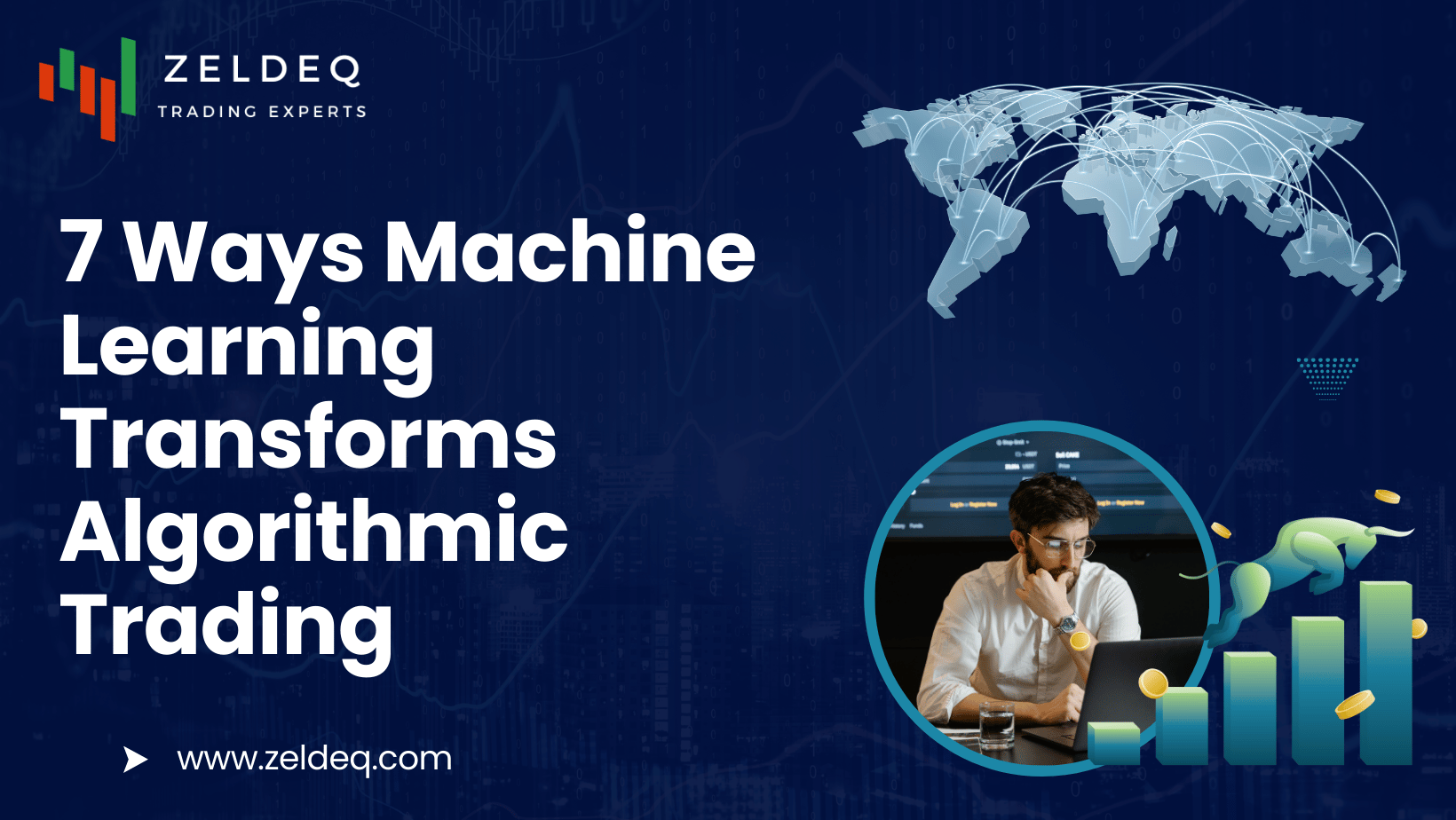Table of Contents
- Introduction
- Enhanced Data Analysis
- Improved Predictive Accuracy
- Risk Management Optimization
- Algorithmic Strategy Development
- Real-Time Decision Making
- Adapting to Market Conditions
- Conclusion
Introduction
In the fast-paced world of finance, staying ahead of the curve is essential for traders and investors alike. Enter machine learning (ML)—a powerful tool that harnesses the capabilities of algorithms to analyze vast datasets, identify patterns, and make predictions. This article explores seven transformative ways machine learning is revolutionizing algorithmic trading, enhancing performance, and providing a competitive edge.
Enhanced Data Analysis
Machine learning excels at processing large volumes of data, which is crucial in trading where even minor fluctuations can have significant financial implications. Traditional analytical methods often struggle to handle big data effectively, but ML models can sift through stock prices, news articles, social media sentiment, and economic indicators to extract valuable insights.
For example, Natural Language Processing (NLP) techniques allow algorithms to analyze news sentiment and correlate it with stock price movements. This means traders can gain insights into how certain news events might affect market behavior before the data is fully digested by human analysts.
| Data Type | Analysis Method | Insights Gained |
|---|---|---|
| Stock Prices | Time Series Analysis | Trends and price predictions |
| Social Media Sentiment | NLP | Market sentiment and potential impacts |
| Economic Indicators | Regression Analysis | Predictive models for market movements |
For further insights on trading fundamentals, see our guide on Understanding How Trading Works: A Beginner’s Guide.
Improved Predictive Accuracy
One of the most significant advantages of machine learning in trading is its predictive capabilities. By employing complex algorithms, such as neural networks and decision trees, ML systems can learn from historical data and identify patterns that traditional methods might overlook.
These predictive models can be continuously refined as new data becomes available, leading to improved accuracy over time. For instance, an ML algorithm might predict stock price movements with a higher degree of accuracy than traditional statistical methods by incorporating various data sources and adjusting for market volatility.
FAQ: How does machine learning improve prediction accuracy?
Q: What types of algorithms are commonly used for predictions in trading?
A: Common algorithms include linear regression, support vector machines, and deep learning models. Each has its strengths depending on the type of data and trading strategy.
For more on stock trading strategies, check out 10 Proven Stock Trading Strategies for 2024 Success.
Risk Management Optimization
Effective risk management is crucial in trading, and machine learning can significantly enhance this aspect. By analyzing historical volatility, market correlations, and other risk factors, ML algorithms can help traders develop more sophisticated risk assessment models.
For example, reinforcement learning algorithms can be employed to simulate various trading strategies under different market conditions, allowing traders to understand potential risks and rewards before executing trades. This proactive approach to risk management can lead to more informed decision-making and reduced potential losses.
Explore essential risk management strategies in our article on Top 5 Risk Management Strategies for Stock Trading Success.
Algorithmic Strategy Development
Machine learning also plays a vital role in developing and optimizing trading strategies. Traders can use ML to create algorithms that automatically adjust their strategies based on real-time data and changing market conditions.
For instance, a trader might deploy a combination of reinforcement learning and genetic algorithms to evolve their trading strategy over time, testing multiple variations and selecting the most successful ones. This process allows for continuous improvement and adaptation, ultimately leading to more successful trading outcomes.
Learn more about essential trading accounts in our guide on 5 Essential Trading Accounts for New Traders 2024.
Real-Time Decision Making
In trading, timing is everything. Machine learning algorithms can process and analyze data in real-time, allowing traders to make informed decisions quickly. This is especially beneficial in high-frequency trading (HFT), where decisions must be made in fractions of a second.
By leveraging ML for real-time data analysis, traders can capitalize on fleeting opportunities that would otherwise be missed. For example, an ML algorithm could identify an emerging trend and execute trades faster than a human trader could react, maximizing potential profits.
FAQ: What are the benefits of real-time decision-making in trading?
Q: How does real-time analysis influence trading outcomes?
A: Real-time analysis allows traders to respond immediately to market changes, helping them capitalize on price discrepancies and minimize losses in volatile conditions.
For tips on day trading, refer to Day Trading 101: Essential Tips for Beginners 2024.
Adapting to Market Conditions
Markets are constantly evolving, influenced by factors such as economic indicators, geopolitical events, and technological advancements. Machine learning algorithms can adapt to these changes by continuously learning from new data and adjusting their models accordingly.
This adaptability is crucial for trading success, as it allows traders to stay relevant amidst shifting market dynamics. By utilizing machine learning, traders can develop strategies that are resilient to market fluctuations, enhancing long-term profitability.
Discover essential steps for successful trading in our guide on 10 Essential Steps to Start Trading Successfully 2024.
Conclusion
Machine learning is more than just a buzzword in the trading world; it represents a fundamental shift in how traders analyze data, make predictions, and manage risk. By enhancing data analysis, improving predictive accuracy, optimizing risk management, developing sophisticated strategies, enabling real-time decision-making, and adapting to market conditions, machine learning is transforming algorithmic trading into a more efficient and profitable endeavor.
As technology continues to advance, the integration of machine learning in trading will likely become even more critical. For traders looking to gain a competitive edge, embracing machine learning techniques may be the key to future success.
For further reading on trading trends, check out Top 5 Trends Shaping the Future of Trading 2024.
By harnessing the power of machine learning, traders can navigate the complexities of the financial markets with greater confidence and success. Happy trading!


